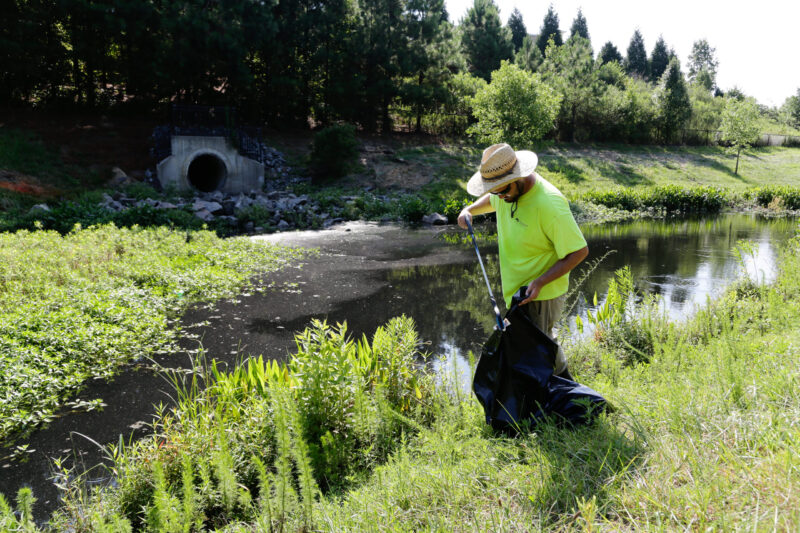Maintenance vs Landscaping
By Jason Abert, Vice President Program Development & Partnerships
Stormwater maintenance looks different on every property. Proper maintenance of a stormwater system includes regular checks or inspections for signs of system deficiencies or failure.
Per region, stormwater systems vary, as does the maintenance required. In southern areas retention and detentions ponds are common systems meant to capture stormwater runoff. In northern areas, such as the Pacific Northwest or Northeast with more concentrated city structures, stormwater can be contained in vaults underground. Because stormwater systems vary so much, it is important to work with professionals that know local regulations and systems common in your area.
In the South specifically, stormwater maintenance can look very similar to landscaping as both maintain vegetation, but stormwater maintenance serves the purpose of compliance rather than beautification. Maintenance looks different at every site as stormwater experts work through existing systems to ensure all assets are functioning properly. Stormwater retention ponds have outlet control structures (OCS); these concrete structures function to regulate the amount of stormwater discharged into connected streams, rivers and lakes. During preventative maintenance visits, stormwater experts check the OCS to ensure there are no failing areas or cracks where water is leaking, the rate of flow is as designed, and no vegetation is growing inside. This is just one example of how stormwater professionals use a comprehensive approach to maintenance by evaluating and minimizing ecological impacts onsite and downstream.
Stormwater professionals follow a similar order of operations at every site, starting with removing excess debris and trash that has accumulated. From there, they work around the pond starting at the waterline and moving up the slope. This includes mowing, removing nuisance vegetation or stabilizing areas with bare earth showing. Each visit, all stormwater assets are inspected to ensure they are functioning properly.
The manner in which stormwater assets are maintained is essential to their health and longevity. Grass around stormwater basins is just as important as the constructed assets. Healthy vegetation prevents erosion and stops sediment before it reaches the water and is not cut as short as manicured lawns, often left at least four to six inches in height. However, grass should be short enough that it can be left until the next site visit. Careful consideration of excess clippings is imperative as discarded grasses accumulate and eventually will clog stormwater assets. Understanding the collaboration between engineered assets and natural processes is essential to the health of your stormwater system.
Landscapers typically manage a property by removing weeds and nuisance vegetation for beautification purposes. Stormwater professionals are trained to understand local vegetation and how each plant is beneficial or harmful for drainage. These professionals understand how to read the original site plans and Stormwater Management Protection Plan (SWPP), which documents each plant and where it was originally placed.
Retention ponds specifically are built with multiple zones that are meant to be maintained in different manners. The water depth ranges from three to five feet depending on precipitation and stormwater accumulation. Sediment collects here and may need to be dredged if too much has accumulated. The water line is called the littoral zone or vegetative buffer. This area is meant to be dense with native plants, often rush grasses, to collect any trash before it reaches the water. This zone is marshy and in the event of flooding, may be underwater. Next is the slope, which aids in the collection of stormwater and acts as a failsafe in case of pond overflow.
Landscapers tend to treat all areas equally- whether a stormwater asset or not, but stormwater professionals know how to maintain these spaces for them to function properly. AQUALIS teams operate with specialized tools, certifications and knowledge to set your property up for success. Maintain compliance with your local municipality by scheduling regular system maintenance.
 Kenosha, Wis. Highway KR Regenerative Stormwater ConveyanceThe Root-Pike Watershed Initiative Network Kenosha County, and others worked with AQUALIS to design and implement an innovative solution for stormwater control along Highway KR.
Kenosha, Wis. Highway KR Regenerative Stormwater ConveyanceThe Root-Pike Watershed Initiative Network Kenosha County, and others worked with AQUALIS to design and implement an innovative solution for stormwater control along Highway KR. Durham, N.C. Sinkhole Leads to Stormwater System RehabilitationThe tenant on this property noticed a depression that opened to the ground below and notified the property owners.
Durham, N.C. Sinkhole Leads to Stormwater System RehabilitationThe tenant on this property noticed a depression that opened to the ground below and notified the property owners.

